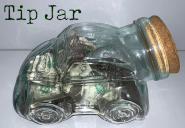

















|
|---|
|
NEW FORD CARS COMBINE 'EYE' AND SERVICE APPEAL Publication: Automotive Daily News Dateline: Detroit, Michigan 
Date: 27 August 1925 Topic: Ford Model T |
Detroit, Aug. 26.—Body changes, more pronounced than any made since the adoption of the model T chassis, and numerous changes in the chassis itself, were announced here today by the Ford Motor Company, with prices remaining unchanged.
Outstanding features of the changes common to both open and inclosed types, are lower all-steel bodies on a lowered chassis, complete new design in most body types, larger, lower fenders, newly designed seats and larger and more powerful brakes.
Closed bodies, for the first time in Ford history, are available in colors.
Longer lines, secured by raising the radiator and redesigning cowls and bodies, are noticeable. All cars are lower from roof to road. Wide crown fenders, hung close to the wheels, contribute to the general effect of lowness and smartness. Rear fenders are attached direct to the body.
Runabout and touring cars are still furnished in the standard black only, but closed bodies are finished in color, with nickeled radiators. Coupe and Tudor bodies come in deep channel green, while the Fordor's color is a rich Windsor maroon.
Larger compartments, more deeply cushioned seats and more leg room provide greater comfort for driver and passenger in all models.
Numerous conveniences and improvements have been incorporated in the new cars. In the runabout, touring car, coupe and Tudor sedan, gasoline tank capacity has been increased from about 9½ gallons to slightly over 10 gallons and the tank is suspended under the cowl separated from the engine by the dash board. It is filled through an ingeniously designed filler cap, completely hidden by a cover similar in appearance to a cowl ventilator.
One-piece windshields and narrowed roof pillars on the coupe and Tudor sedan produce greatly increased range of vision for the driver, and improved ventilation. By tilting the windshield downward slightly, the front compartment is flooded with air downward through the cowl. An increased angle delivers direct ventilation to passengers.
Additional driving comfort has been secured by lowering the seats in the runabout, touring car, coupe and Tudor types 3½ inches. Seats are more deeply cushioned than heretofore. The steering column has been lowered three inches in the types just named, and the steering wheel increased from 16
Ford Prices Unchanged Despite Wide Improvements
to 17 inches on all types, with a new steering reduction of 5 to 1 ratio to accomodate balloon tires, which are optional on all types. Brake and clutch pedals are wider, more conveniently spaced and equipped with flanges that prevent the driver's feet from slipping off.
Four doors are now standard on the touring car and on the runabout, permitting the driver of either of these types to leave his seat through the left side of the car without disturbing the passengers. All doors open forward except the rear doors on the Fordor sedan, and on the open types are fitted uprights to hold storm curtains securely and permit them to be opened with the doors.
Improved brakes are the most important mechanical changes on the chassis. Transmission brake drum and bands have been increased from 1⅛ inches to 1¾ inches in width, making for smoother and more positive braking action and longer life. Transmission bands now have removable ears to facilitate changing of band lining.
Hardened steel shoes over clutch casing keys prevent wear, rear wheel brake drums have been increased from 8 to 11 inches in diameter and from 1 5-32 inches to 1½ inches in width. Brake shoes are covered with asbestos composition brake band lining and brake bands are of self-energizing type.
The Tudor sedan body is 2½ inches lower in body. This, added to the 1½ inch lowering of the chassis, brings the roof of the car four inches nearer the road. In the coupe, runabout and touring car the bodies have been designed three inches lower, and as a result of lowering the chassis are 4½ inches lower from road to roof.
Interior color schemes have been designed in harmony with the paint jobs.
